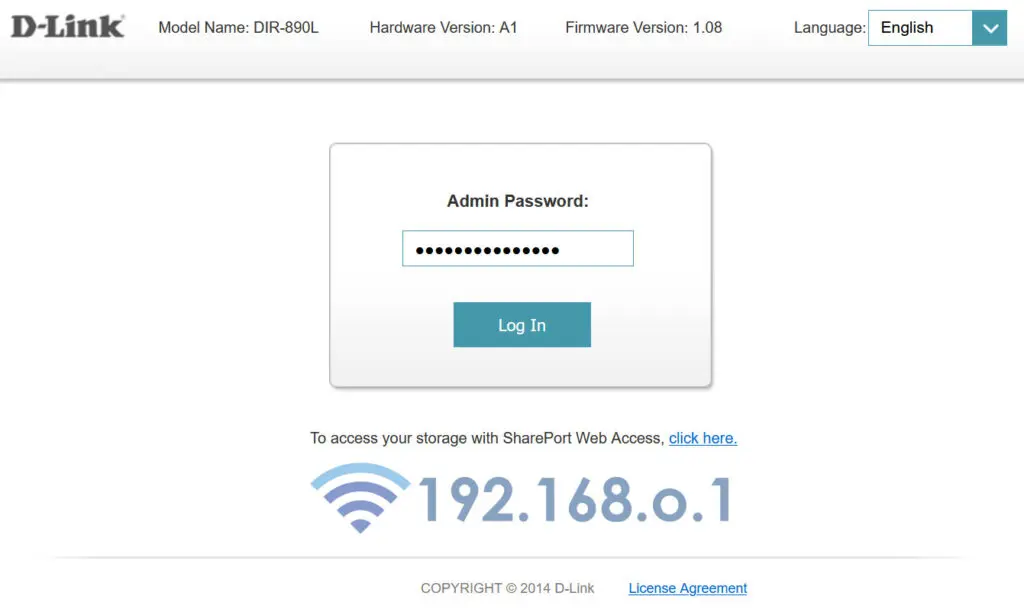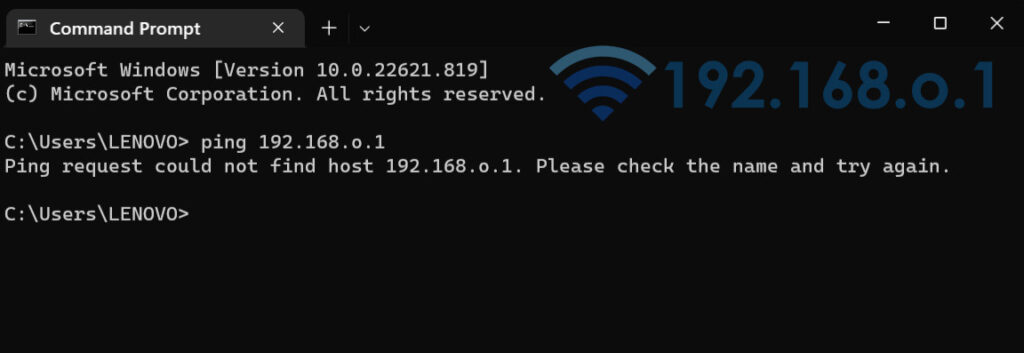Admin Login for 192.168.o.1 or 192168o1 Routers
192.168.o.1 is a private IP address that is mostly used by various WiFi router vendors as a default router address.
To connect to the internet, your devices require a set of two Internet Protocol (IP) addresses – a local and a public one. The public IP is assigned by your Internet Service Provider (ISP) and it is the address you use to communicate with websites and services across the World Wide Web. The other type of IP, the local one, is part of your private network at home or the office. In this case, 192.168.o.1 is your wireless router’s private IP address. It is the backbone of your internet connection because the device uses it to communicate with your smartphones, laptops, tablets, and other internet-capable devices. The private IP is the router’s PO box. Let’s say that you connect three other devices to your Wi-Fi. First, you log onto the network using your smartphone. It gets its own private IP – 192.168.o.2. Then the PC you connect will have a private IP that looks like this – 192.168.o.3. The printer, which in this scenario is the third device will get 192.168.o.4. Thanks to the network built around the 192.168.o.1 private IP, your router knows where the requests for data packages come from and how to distribute them once they arrive from an outside site or an internet service.
How to Login to 192.168.o.1
If you are not certain that the IP of your router is 192.168.o.1 then you can try using http://192.168.0.1 as an address of your router admin panel.
In addition to facilitating communication between devices within your network, the 192.168.o.1 private IP serves another function. It is the gateway through which you can log in to your router’s configuration. By tweaking certain features in the settings menu you can:
- Personalize your network to your liking.
- Make your Wi-Fi faster
- Ensure the security of your home or office wireless network

Accomplishing these things doesn’t require specific technical knowledge or even much time. All you have to do is follow a few simple steps to successfully log in to router and start making your internet connection better.
The first step is to choose an internet-capable device that you will use to fine-tune your network. It is best to use a laptop or a desktop computer since those provide a more stable connection and screens that facilitate more comfortable work. However, a tablet or a smartphone will do the same job if necessary.
If you have chosen to proceed with a laptop or a PC, it is best to connect the device directly to the router via an Ethernet cable. In that way, you will avoid disruptions in your connection and make sure you complete the task at hand faster and without interruptions. Open an internet browser of your choice. The most obvious choices work the best in these situations:
- Chrome
- Firefox
- Mozilla
- Safari
Type 192.168.o.1 in the address bar and hit enter.

The browser should open a screen prompting you to enter a username and password. These are most often the default logins assigned by the manufacturer. You will find them on the label at the back of the device, right below where 192.168.o.1 is listed as your default private IP. Enter them and the router’s settings menu will pop up. From here, you can start optimizing your wireless network.
Changing the Router IP Address to 192.168.o.1 or something else
The fact most manufacturers assign the same local IP to most or even all routers they produce poses a potential security risk. If you’d like to change your router’s private IP to 192.168.o.1 or anything else, just log into the router’s settings menu and look for the Network Settings tab. There should be a sub-menu called Router Settings, where you will find your private IP listed. Change it to 192.168.o.1, or another string of four numbers between 0 and 255 to your liking.
The Difference between 192.168.o.1 and 192.168.0.1
It’s possible when you type 192.168.o.1 into your browser you get an error message. Check if you didn’t enter a typo and if your actual local IP is 192.168.0.1. 192.168.o.1 and 192.168.0.1 look similar, just like 192.168-o-1 or even https://192.168.o.1 and www.192.168.o.1, but they are completely different to your computer and other electronic devices.
Troubleshooting common problems with 192.168.o.1
The most common issue with accessing your router is that you can’t connect to the settings page. There are several possible reasons to check for:
- Your ISP has changed the device’s private IP. Try calling them for clarification.
- The router’s default IP hasn’t been “192.168.o.1”, to begin with. Look at the label on the back of the device to make sure it is the correct IP.
- You are making a typo when typing the private IP. Check if you aren’t trying to access your router at 192168o1, or if you should use the 192.168.0.1 private IP instead.
- You are not connected to the correct wireless network. Try connecting to the router via Ethernet/LAN cable.
You have forgotten the Username or Password for Your Router
The easiest way to remember the default logins for your router is to look in the user manual, or on the label at the back of the device. All routers from your brand and model are likely to share the same default logins, so you might want to look online for those as well. In case you or your ISP have changed the logins while setting up the wireless network of your router, you might have to perform a factory reset to regain access to the device. To do that, simply hold the Reset button until the lights at the front of the device starts blinking and then go off. When you factory reset the router, you will be able to access the settings menu at 192.168.o.1 with the default logins, but you will have to set up your network again.
Problems with Ping requests to 192.168.o.1

If you are trying to reach your network’s host via a Ping request to 192.168.o.1, and you get an error message, please make sure to double-check the hostnameand try again. In order to ping your router:
ping 192.168.o.1How to Update the Router Firmware
To make sure your router and the associated network work properly, make sure the device’s firmware is up to date. Login to the router’s settings at 192.168.o.1. In the Network settings tab find the Router Settings submenu. Scroll to firmware and check for updates. Download the updates and install them. Once finished, the router will restart on its own with its new settings.
Can I change the default address?
192.168.o.1 is an IP address taken to be default set for a certain breed of home broadband routers. Mostly, D-Link and Netgear router models have 192.168.o.1 set as a default IP address. ‘Default’ has pretty loose connotations when used to describe the nature of this address. This means that the address of 192.168.o.1 is associated with the equipment at the factory of the manufacturer. However, any user can later change this IP address by making use of the network router’s administration panel. This private IPv4 network address can serve the purpose of establishing the default gateway on home routers. The procedure for this is pretty simple and easy to understand. An address of 192.168.0.1 is pointed to https://192.168.0.1 through the web browser and in this sense, access is gained to the administrative console on routers with this default set IP address. Network administrators often need to access the administrative settings and tweak them for either changing the network characteristics or troubleshooting any problems with the network. Using simple and readily available programs like Mozilla Firefox and Internet Explorer, one can easily access this administration panel. System administrators of network are generally seen accessing the control panel through this channel. However, even any other network user can employ this simple method of accessing the panel. One can either refer to the list of standard usernames and passwords or request for the same from the manufacturer of the broadband router.
Although D-Link and Netgear are known to use 192.168.o.1 as the default IP address with their routers, this address, or any other comparable private address corresponding to the IPv4 class of addresses can be used by other brands of routers also. Any computer or any local network can also employ this address. People involved with the use of routers are generally very familiar with this address. Also, the procedure of setting up a LAN (Local Area Network) is bound to involve interaction of the network engineer with this address. 192.168.0.1 is among the most commonly used addresses of IPv4 class for network administrators.
How does a router work?
A broadband router is an integral part of a home or privately set network of computers. Any broadband connection has a broadband router in place. A router comes into the picture at the point of meeting of two networks that are intended to be connected, called a gateway point. This device then performs the integral task of facilitating data flow between networks and linking these networks to the Internet as well. Private IP addresses prove useful because of the reason that they are only unparalleled inside the home network which they are a part of. However, this also suggests that this address can be used by only one device at a time as duplication would otherwise result in clashes within the network.
192.168.o.1 presents quite a few advantages that justify its default use by leading manufacturers of networking equipment. Computers belonging to different networks can use the IP as their respective addresses as long as there is no common network. This simultaneous and repetitive usage on the condition of different entities of networks lends a strong advantage of use to this set of numbers as an IP address. Also, using this IP address means that there is no separate need of using a DHCP server. The router proves sufficient to dispense with all tasks and there is no need of any other switches. Apart from this, information flow becomes easier and router management becomes less complex with the usage of this address. Its dual role as a possible default gateway facilitates the processing and distribution of data to various destinations.
With the advantages come certain pointers that lend network engineers useful methods of troubleshooting network problems associated with the use of 192.168.o.1. The inherent property of single instance usage in a network means that if more than one devices use this particular IP address in one network, there will be network malfunctioning. Checking 192.168.0.1 is likely to yield fruit when it comes to beginning with troubleshooting. Also, any security breaches and suspected hacking attempts warrant a close check with this IP before any complex analysis. Apart from all these, your router is also where you’d head off to if you want to reconfigure the modem. Modification of any settings will also take you the same route. Changing the setup of the LAN or altering the username or password is also achieved via 192.168.0.1. Several other security problems are also resolved this way.